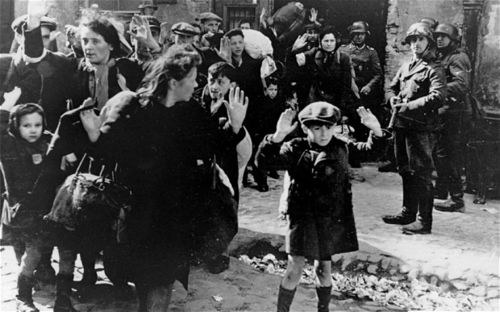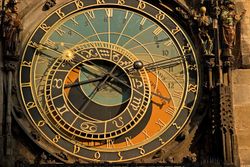Difference between revisions of "Category:Holocaust Children (subject)"
| Line 52: | Line 52: | ||
|content= [[File:Timeline.jpg|thumb|left|250px]] | |content= [[File:Timeline.jpg|thumb|left|250px]] | ||
'''[[ | '''[[Holocaust Children Studies]]''' : [[:Category:Holocaust Children Studies--2020s|2020s]] -- [[:Category:Holocaust Children Studies--2010s|2010s]] -- [[:Category:Holocaust Children Studies--2000s|2000s]] -- [[:Category:Holocaust Children Studies--1990s|1990s]] -- [[:Category:Holocaust Children Studies--1980s|1980s]] -- [[:Category:Holocaust Children Studies--1970s|1970s]] -- [[:Category:Holocaust Children Studies--1960s|1960s]] -- [[:Category:Holocaust Children Studies--1950s|1950s]] -- [[:Category:Holocaust Children Studies--1940s|1940s]] -- [[:Category:Holocaust Children Studies--1930s|1930s]] | ||
'''[[Timeline|General]]''' : [[2020s]] -- [[2010s]] -- [[2000s]] -- [[1990s]] -- [[1980s]] -- [[1970s]] -- [[1960s]] -- [[1950s]] -- [[1940s]] -- [[1930s]] -- [[1920s]] -- [[1910s]] -- [[1900s]] -- [[1850s]] -- [[1800s]] -- [[1700s]] -- [[1600s]] -- [[1500s]] -- [[1450s]] -- [[Medieval]] -- [[Timeline|Home]] | '''[[Timeline|General]]''' : [[2020s]] -- [[2010s]] -- [[2000s]] -- [[1990s]] -- [[1980s]] -- [[1970s]] -- [[1960s]] -- [[1950s]] -- [[1940s]] -- [[1930s]] -- [[1920s]] -- [[1910s]] -- [[1900s]] -- [[1850s]] -- [[1800s]] -- [[1700s]] -- [[1600s]] -- [[1500s]] -- [[1450s]] -- [[Medieval]] -- [[Timeline|Home]] | ||
Revision as of 10:10, 18 October 2020
|
Holocaust Children Studies (Home Page)
4 Enoch includes the biography of over 800 children:
This page is edited by Gabriele Boccaccini, University of Michigan
|
Holocaust Children Studies : 2020s -- 2010s -- 2000s -- 1990s -- 1980s -- 1970s -- 1960s -- 1950s -- 1940s -- 1930s General : 2020s -- 2010s -- 2000s -- 1990s -- 1980s -- 1970s -- 1960s -- 1950s -- 1940s -- 1930s -- 1920s -- 1910s -- 1900s -- 1850s -- 1800s -- 1700s -- 1600s -- 1500s -- 1450s -- Medieval -- Home
|
Overview
When World War II began in September 1939, there were approximately 1.6 million Jewish children living in the territories that the German armies or their allies would occupy. When the war in Europe ended in May 1945, more than 1.2 million and perhaps as many as 1.5 million Jewish children were dead, targeted victims in the Nazis’ calculated program of genocide. As Warsaw ghetto historian Emanuel Ringelblum wrote in 1942, “Even in the most barbaric times, a human spark glowed in the rudest heart, and children were spared. But the Hitlerian beast is quite different. It would devour the dearest of us, those who arouse the greatest compassion—our innocent children.”
All Jews were targeted for death, but the mortality rate for children was especially high. Only around 150,000, or 6 to 11% of Europe’s prewar Jewish population of children survived as compared with 33% of the adults. The young generally were not selected for forced labor, and the Nazis often carried out “children’s actions” to reduce the number of “useless eaters” in the ghettos. In the camps, children, the elderly, and pregnant women routinely were sent to the gas chambers immediately after arrival.
Liberation from Nazi tyranny brought no end to the sufferings of the few Jewish children who survived the Holocaust. Many would face the future without parents, grandparents, or siblings.
The largest group of surviving children (60,000) was in Romania. There were 15,000 children alive in France; 12,000 in Hungary as well as in Bulgaria; 7,000 in Poland as well as in Italy; 4,000 in Belgium as well as in the Netherlands; between 2,500 and 4,500 in Czechoslovakia; 2,400 in Greece. A few thousand children survived in Concentration camps: 1,600 in Theresienstadt, 900 at Buchenwald, 500 at Bergen-Belsen, 300 at Auschwitz, etc. As many as 60,000 child survivors emigrated to the United States after the war.
Lost Childhood
Why are we devoting so much time to children during the Holocaust?
Children have rarely a life of their own. Their lives depend on the adults who take care of them. There are very little opportunities for children to be known apart from their families. The Jewish child is no exception (we know the names of only a few children who have distinguished themselves as children in Jewish history).
In antiquity, most of the stories about children in the Bible present "ordinary" stories of child rivalry, family conflict, ecc. Only a few children are remembered for something really special that happened to them: Joseph (was sold as a slave, became the viceroy of Egypt), David (killed Goliath in battle), Daniel (served the Persian administration), etc.
With the creation of schools more opportunities were offered to children to distinguished themselves outside of their own families, first of all for their learning as "exceptional students" (child prodigies). Josephus, Jesus, etc. The Rabbis had a term to עילוי or עלוי (i'lui) to denote child prodigies who distinguished themselves in the study of the Torah for their intelligence and memory.
The Emancipation gave Jewish children (both boys and girls) the opportunity to distinguish themselves in other fields than religion, namely, as child singers, child actors, child musicians, as well as students of science.
- Mischa Elman (Ukraine, 1891-1967), violinist <picture (1905c)>
- Norbert Wiener (US, 1894-1964), mathematician <picture>
- William James Sidis (US, 1898-1944), mathematician (entered Harvard at 11) <picture>
- Wolfgang Zilzer (Germany, 1901-1991), child actor, Holocaust refugee
- Jascha Heifetz, violinist (Lithuania, 1901-1987), violinist <picture>
- Roman Totenberg (Poland-Russia, 1911-2012), violinist <picture>
- Robert Gordon (US, 1913-1990), child actor (then filmmaker) <picture 1> <picture2>
- Yehudi Menuhin (US-UK, 1916-1999) <picture>
- Robert Rietti (UK, 1923-2015), child actor
- János Starker (Hungary, 1924-2013), cellist, Holocaust survivor
- Mel Tormé (US, 1925-1999), child singer
- Jerry Tucker (US, 1925-2016), child actor
- Bobby Breen (Isadore Borsuk) (Canada, 1927-2016), one the most famous child actors and singers of the time <picture> <film (see 00 and 50:30)> <Ombra mai fu (Handel)> <Sometimes I Feel like a Motherless Child (45:06)>
- Lea Deutsch (Croatia, 1927-1943), child actress, Holocaust victim <picture>
The normal situation of children is that adults are taking care of them. Only exceptional situations force some children to become adults before time. Sister Raises Five Siblings Alone After Parents’ Death (2:30) (The View, Woody Goldberg).
The Holocaust marked for an entire generation (around 1.6 millions of Jewish children in Europe) a complete reversal of their "normal" status. Adults became children (i.e. powerless), and children were forced to become adults. in order to survive, they had to take their lives in their own hands and make life-or-death decision for themselves and often also for their own relatives. This makes the Holocaust such a special time for the Jewish child, a time in which children have become protagonists without having asked for it.
- Brundibar - 60 MINUTES Theresienstadt (Terezin)
After the Holocaust, the "return to normality" meant the reestablishment of the parent-child relation:
- Daniel Beremboim (b.1942), pianist
- Edith Stern (b.1952), mathematician
- Ruth Lawrence (UK, 1971), mathematician, youngest person to attend Oxford University at 12.
Biographies
Death and Survival
(90% of the 1.5 million Jewish children living in Europe under Nazi rule perished during the Holocaust:
- At the beginning, after Hitler rose to power in 1933, Jewish children were not targeted. They suffered discrimination, exclusion and humiliation. They could no longer attend schools, they could not pursue an education, meet with non-Jewish friends, etc. Many tried to escape with or without their families especially after Kristallnacht (Nov 9-10, 1938), when Jewish synagogues and properties were destroyed in a massive pogrom.
- After the beginning of the war, in September 1939, Jewish children experienced the ghettos. They began to die in the thousands because of hunger and disease.
- Starting from June 1941, with the Nazi invasion of the Soviet Union, for the first time Jewish children in Eastern Europe were shoot with their families in mass executions.
- In 1942 began the systematic killing of children, They were deported from the ghettos to the death camps. Only some children who lied about their age and could work, were able to survive. Others were able to flee before being captured.
Only 10% of children survived the Holocaust (around 150.000):
- (a) Refugees, with their families or alone (Kindertransport), who left continental Europe before the war started.
- (b) Hidden Children (with their families, with non-Jews, with the partisans, in Christian boarding schools, etc.)
- (c) Nazi Ghettoes and Labor Camps (mostly adolescents, and a few younger children who were kept alive to serve as errand boys or for medical experiments).
- (d) Family Camps (Bergen-Belsen, Theresienstadt)
This category currently contains no pages or media.


